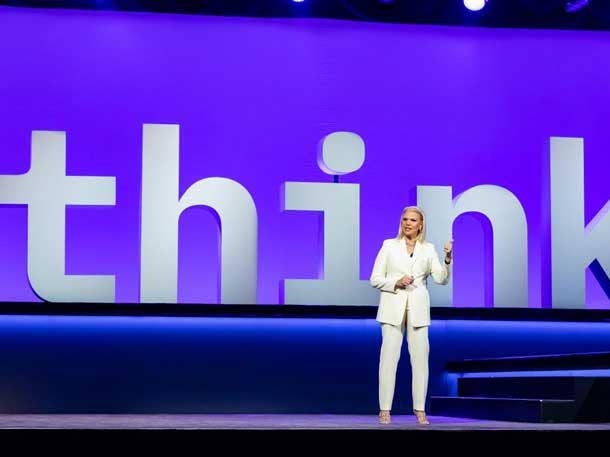IBM CEO And Friends Open Up About Open Source: ‘Everything That Can Be Open Source, We'd Prefer To Be Open Source’

IBM CEO Ginny Rometty welcomed open source thought leaders from non-profit foundations and corporate end-users Thursday to a panel in which she sought their insights and guiding philosophies into supporting further open source innovation.
Well before reaching a deal last year to purchase Red Hat, IBM was a leading advocate for corporate involvement in open source communities and among the first enterprise software giants to actively participate in development of those technologies.
"In our case, everything that can be open source, we'd prefer to be open source," Rometty told attendees of the session at the THINK 2019 conference.
[Related: IBM CEO Rometty's 5 Lessons For Scaling AI]
All of IBM's most-important initiatives—from cloud to blockchain to artificial intelligence—are looking to open source code, open data, open standards and open architecture.
Jim Zemlin, executive director of the Linux Foundation, told Rometty that when the open source community is at its best, it works in a virtuous circle with enterprise technology vendors like IBM.
But people in his position need to keep explaining to companies how projects become products which create profits and then reinvestment back into those projects, he said.
The successful productization of open source is evident in the $65 billion in M&A activity just last year around open-source technology, he said.
"I contributed half of that," Rometty joked, referencing IBM's pending $33 billion acquisition of open source leader Red Hat.
Abby Kearns, executive director of the Cloud Foundry Foundation, said it’s important for companies that profit from open source to contribute to those communities in any way they can.
When corporations weigh the investment of time, people, money and effort, they need to understand that if they're leveraging a technology, it's in their interest to give back, Kearns said.
"Without that contribution, the future of that open source technology is not guaranteed," Kearns said. "It will eventually stagnate and fall to the side if there's not constant contribution, organic and sustainable contribution, around what that technology needs to do."
There are ways open project leaders can encourage corporate participation.
Just like volunteer developers, the more that large corporations contribute code, the more they are involved in guiding the direction and governance of those projects, Kearns said.
Steve O'Grady, co-founder of RedMonk, an industry analyst firm catering to software developers, said most code has no reason to be proprietary. True differentiating technology is a small percentage of any enterprise’s code base, he said, but companies still are hesitant to contribute back to a community.
One way to encourage more openness, he said, is "to flip the script."
If corporations truly want to become more friendly to the open source movement, they can change their policies from "justifying why it's open," he said, to "justifying why it's closed."
IBM has, over the years, put effort into encouraging its developers to be active open source project participants, Rometty said.
"The first, most-important principle is you really have to give back more than you take," IBM's CEO said. "This is very important to us. We make this part of everyone's job."
Zemlin offered an example of how he's seen Big Blue innovate around the corporate-community nexus.
When IBM first started contributing to the Linux project, the company tried to incentivize its engineers by paying them for the amount of code they submitted that ultimately got into the Linux kernel to meet its business requirements.
That approach was unsuccessful, he said. "They weren’t getting any code in."
Then an IBM manager changed the equation. They decided to pay their engineers when IBM's functional requirements got incorporated into the project, regardless of whether an IBMer wrote them or not, Zemlin told THINK attendees.
That approach embraced the open source spirit, he said, and in doing so ended up making "a massive difference in the business outcomes. "
All the panelists, including the two representing large industry customers, agreed the largest misconception about open source software is that it's not sturdy enough for the enterprise.
Marcelo Labre, executive director of risk management at Morgan Stanley, told Rometty the greatest myth about open source is that "it's full of bugs and is unsafe."
Andre Fuetsche, CTO of AT&T and president of AT&T Labs, added, "open source is actually more secure than proprietary code. Just having more eyeballs looking at the code, you go faster and find bugs faster and get them fixed faster."
Zemlin followed up by telling the audience that the myth that open source is not professional, and built by volunteers, is not true.
More than 90 percent of the people who work on Linux "are professional developers paid by companies like IBM at the highest levels of their game creating software in a very rigorous way that is more secure, more scalable, better than any software we've ever seen created," he said.